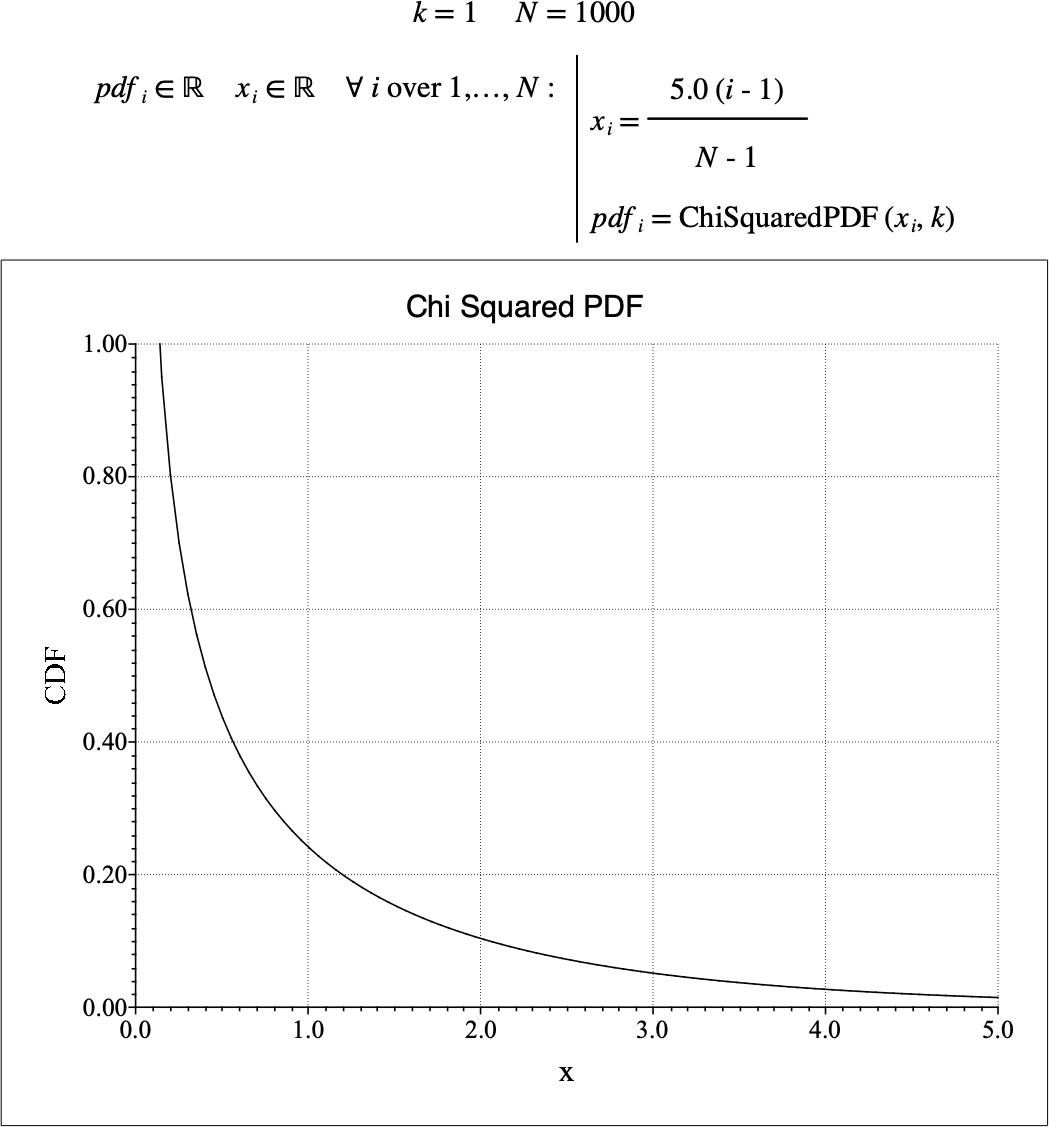\(\text{ChiSquaredPDF}\)¶
You can use the \(\text{ChiSquaredPDF}\) function to calculate the probability density function (PDF) of the chi-squared distribution.
You can use the \chisquaredp backslash command to insert this function.
The following variants of this function are available:
\(\text{real } \text{ChiSquaredPDF} \left ( \text{<x>}, \text{<k>} \right )\)
Where \(x\) and \(k\) are scalar values indicating the value of interest and the degrees of freedom respectively. The function is defined for all \(k \in \mathbb{Z}\) where \(k > 0\) and where \(0 < x\) if \(k = 1\) and \(0 \leq x\) for all other values of \(k\).
The value is calculated directly using the relation:
The chi-squared distribution represents the sum of the squares of \(k\) standard normally distributed random variates.
Figure 117 shows the basic use of the \(\text{ChiSquaredPDF}\) function.

Figure 117 Example Use Of the ChiSquaredPDF Function¶
